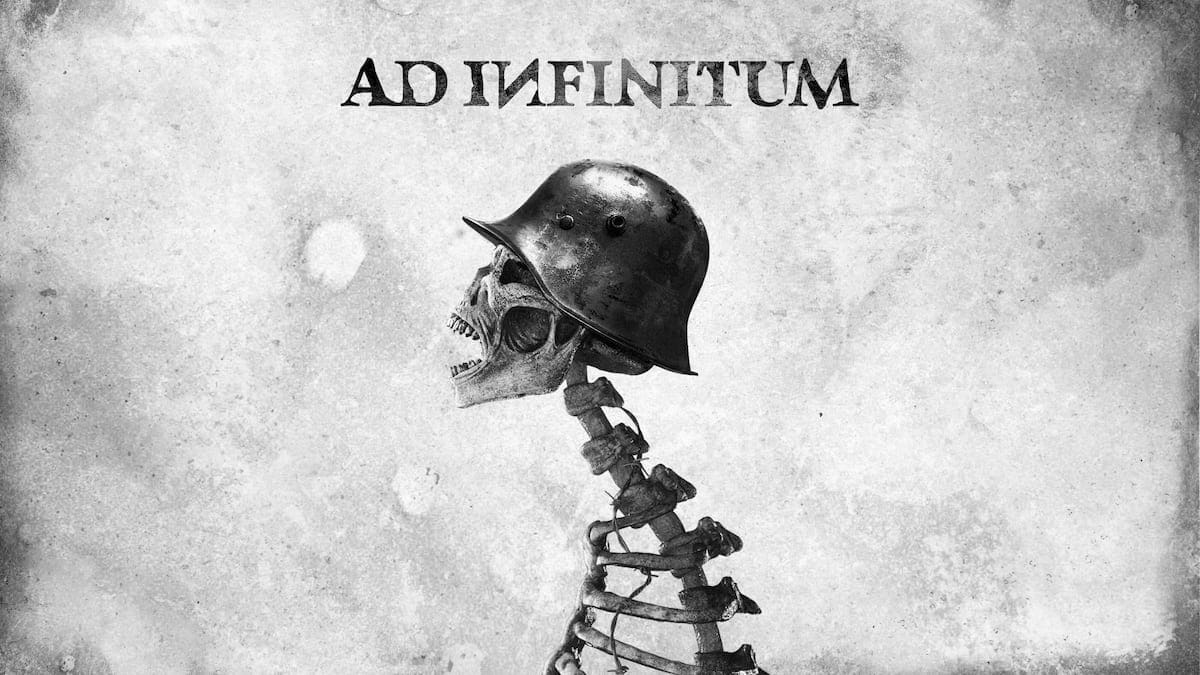The horror genre in gaming is a niche that covers a broad spectrum of different types of fear. From jump-scare bonanzas, to existential horror, dread-infused slow burns, everything in between, and much more. Everyone has their preferred flavour of fear, something that kicks that feeling of terror into overdrive. How does that relate to Ad Infinitum? That is because this game has a very peculiar sort of horror that we will discuss further in this review, something that will determine if this is the game for you or not.
Ad Infinitum was developed by Hekate, a small German indie studio that started working on it as a passion project, before being picked up for publishing by Nacon. The game suffered a delay earlier this year, before aiming for its September release.
Playing through the game, you can palpably feel the passion that the team has poured into this project. From authentic World War I weaponry, locales, backgrounds, and even trinkets, to superb sound design and music that builds up the atmosphere. Despite being a horror game first and foremost, Ad Infinitum is very narrative-driven, rewarding players who pay attention to the story and who uncover the secrets as they play. With that in mind, I’ll refrain from any major spoilers, reserving them only for out-of-context examples where appropriate.
Story and Themes: A Study in Horror and Tragedy
The game is a psychological horror experience with dramatic implications that unfold before the player’s eyes, telling a heart-wrenching story about the horrors of war and a family torn apart by it. Not many games use the horrific Great War as their backdrop, which in and of itself is a fertile ground for tales of horror before any supernatural elements are sprinkled in.
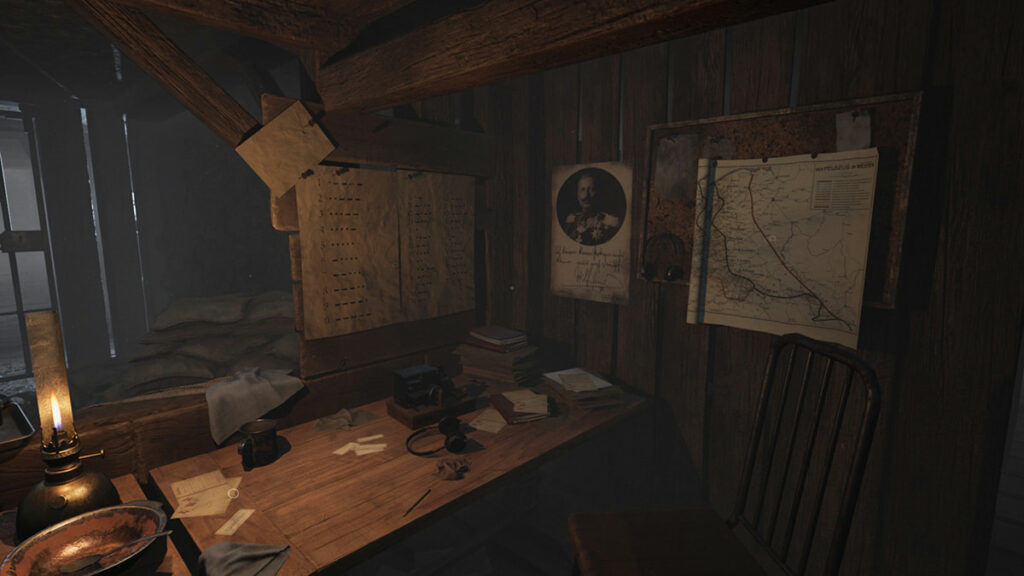
You can plainly see this in the game’s prologue, which takes our protagonist, Johannes von Schmidt, a telegrapher stationed at the Western Front, to interpret the latest suicide charge order. You pick up the rifle and receive the instructions on how to shoot in a quick tutorial. Making your way out from the trenches into the debris and fog of no-mans-land, you keep looking for targets and advancing your position. Mud, puddles, barbed wire, and screams of soldiers from both sides are front and centre while you keep looking for targets. But there are none until catastrophe strikes.
Next thing you know, you wake up in bed in your family manor back in Germany, yet not everything is as it seems. This is where the game properly starts, as you slowly begin to unravel the tragedy of your family and how war has torn it apart in the most horrific manner. From your brother Paul, a fellow soldier in the family’s long tradition, to your staunch father, and French mother, the game leans on difficult themes of death, depression, xenophobia, mental illness, PTSD, and much more.
The home is dilapidated and haunted by apparitions, disembodied voices, strange sounds and occurrences, and sprinkled with clues that tell the story of the war’s aftermath and its effect upon the once-proud family. Ad Infinitum’s greatest strength is the way in which it weaves dread into even the most mundane aspects of its gameplay. For example, the manor is arguably the “safe” zone for you to explore and piece together the clues, yet every step you take makes you question if you should make the next one.
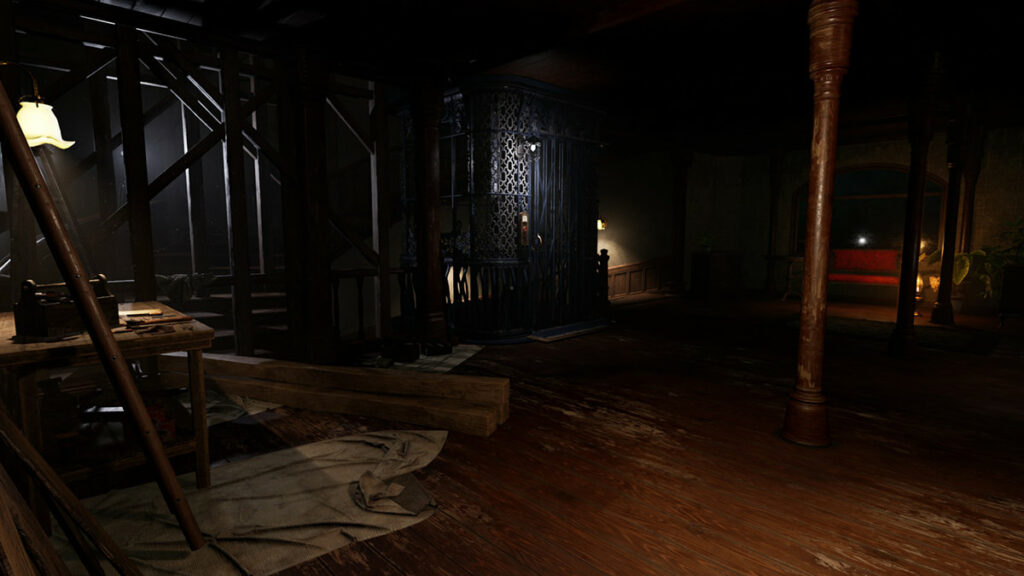
While it doesn’t shy away from jump-scare tactics which are often regarded as a cheap shot, it thankfully uses them sparingly and in situations that make them warranted and appropriate. More so, it relies on the game’s themes and impending feeling of slow-burn terror to convey its horror aspects.
Certain events in Ad Infinitum switch your perspective between the manor and the front, putting you back in danger which is only exacerbated by the monsters that start appearing. It makes you wonder if you’re reliving a nightmare, or are trapped in one. These monsters represent the trauma of your family members, with each responding to different stimuli to help you avoid them. And avoid them you must, because just like in games like SOMA and Amnesia, you aren’t able to directly confront them.
You have to find ways to circumvent them by using sound, vision, and your surroundings, though sometimes it feels like even that isn’t enough. On such occasions, you suddenly find yourself back in the manor, with the next piece of the narrative puzzle to solve. Just as the name Ad Infinitum suggests – you are seemingly trapped between the two horrors “forevermore”. The game asks you to make choices involving the monsters your family tragedy spawned, and it is up to you to show them mercy or perpetuate their darkness, with the game responding and morphing based on how you react up until the very end.
- Narrative score: 5/5 points
Graphics and Presentation
Everything in the game looks immersive, with graphics that perfectly capture the melancholic look of the setting. Perhaps the main gripe can be leveraged on the human models in the game, which look and move uncannily at times, though that arguably adds to the horror aspects that have become a staple of the genre. As mentioned earlier, all period elements were designed with authenticity in mind, and they tend to look great on screen. However, some other elements look better than others, with more care and polish in comparison.
- Graphics score: 3/5 points
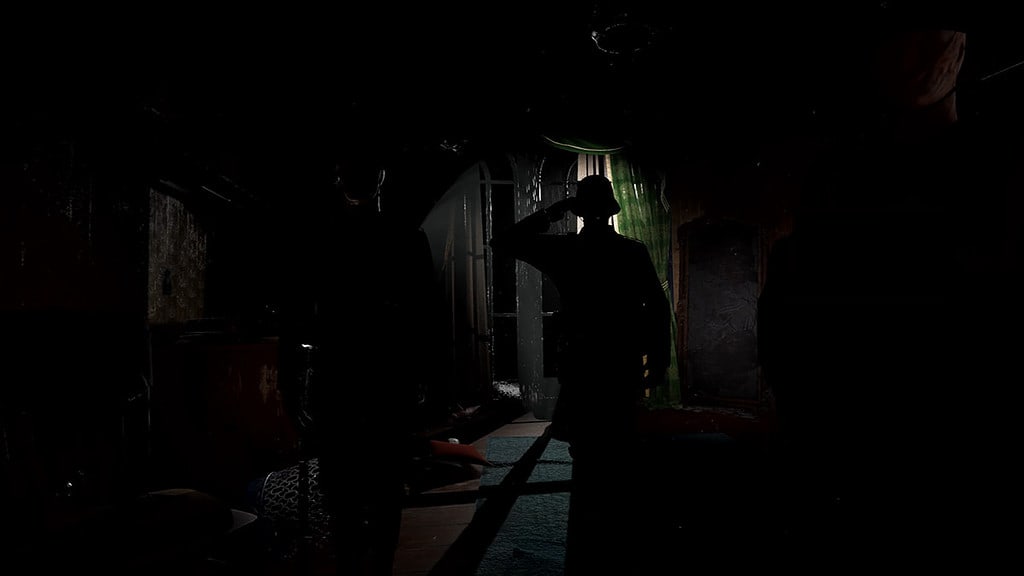
Music and Sound Design
Ad Infinitum shines in the sound design and music departments. The game’s music is eerie and haunting, with sudden bursts of early-century marches and classical pieces. The voice acting is another surprisingly positive aspect, from letters that are read out loud, friendly and enemy soldiers talking or yelling, to screams and screeches that you’ll hear throughout the game. Positional audio is also very well done, and you can immediately tell the general direction in which a certain object has fallen, for example. Yet the best part of the game’s sound design is the silence. Ad Infinitum knows how to leverage silent moments to build up the dread and atmosphere, before the sound returns to the forefront.
- Music & Sound Design score: 4/5 points
Gameplay
Between the investigation and horror, Ad Infinitum is filled with puzzles that serve to progress the story further. These puzzles aren’t too challenging and are mostly comprised of finding the correct objects and putting them in the right place and in the correct sequence. My best advice is not to overthink them, as I did in one instance. For example, in a certain portion of the game, I tried to open a door by trying a different combination of triggers that seemed to elicit a response from the supernatural elements around me. After admittedly too much time spent trying various combinations, it boiled down to simply finding a key tucked in a box in a drawer that I missed.
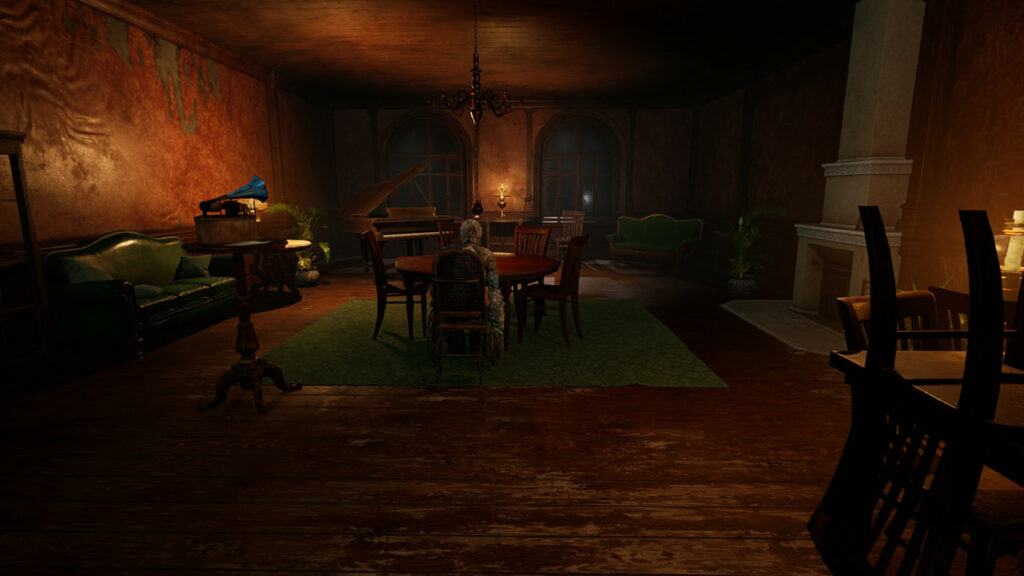
The traditional gameplay aspects are perhaps Ad Infinitum’s weakest points. For example, movement is fine, but there are some glitches that make you get stuck on invisible edges. This is fine during exploration, but definitely frustrating if you’re in the middle of a sequence when you’re running from a monster. The mechanics of opening and closing doors are very reminiscent of SOMA, but too often feel fidgety. Too many times I’ve tried opening a door only for it to shut in the opposite direction. At first, I thought that was a ghost or something trying to prevent me from opening, but after much testing, it turned out that the only apparition preventing progress was the in-game physics sensitivity of these objects.
Similarly, many inventory items that you have to use feel needlessly slow, especially during the more adrenaline-driven instances. You have to click on precise points for them to work and risk getting stuck in a long animation if you accidentally miss them.

Another pet peeve I had with Ad Infinitum was the save method. Namely, the game can only be saved in specific checkpoint locations which often seem to be too few and far between. For instance, if you need to leave in the middle of a puzzle, you can’t just save and continue later, but instead start all over again. Furthermore, you can have only a single rolling save of a single playthrough. This is fine for the most part, but having the option for different save positions or at least playthroughs would’ve been much more convenient.
Lastly, Ad Infinitum suffers from a few performance issues in the latter half of the game. It’s not too jarring but definitely noticeable, so that’s hopefully something that can be rectified with a future patch.
- Gameplay score: 3/5 points
Conclusion
In closure, Ad Infinitum was a fantastically dreadful experience in the best possible way. Horror, in general, can be summed up as a very subjective genre, and gaming horror is arguably the most immersive type of horror, compared to its literary and on-screen counterparts. From my personal perspective in terms of interests and experiences, the themes of Ad Infinitum hit closer to home than a game like Amnesia or Outlast, for example, so your mileage may vary.
Speaking of which, besides drawing obvious comparisons to Amnesia and SOMA as the two closest examples, Ad Infinitum reminded me a lot of Layers of Fear with a dash of Silent Hill atmosphere peppered in. It was a breath of fresh air and definitely comes highly recommended to gaming horror aficionados. If you’re looking for the next great horror experience, you will be intrigued, terrified, and ultimately satisfied with everything that Ad Infinitum has to offer.
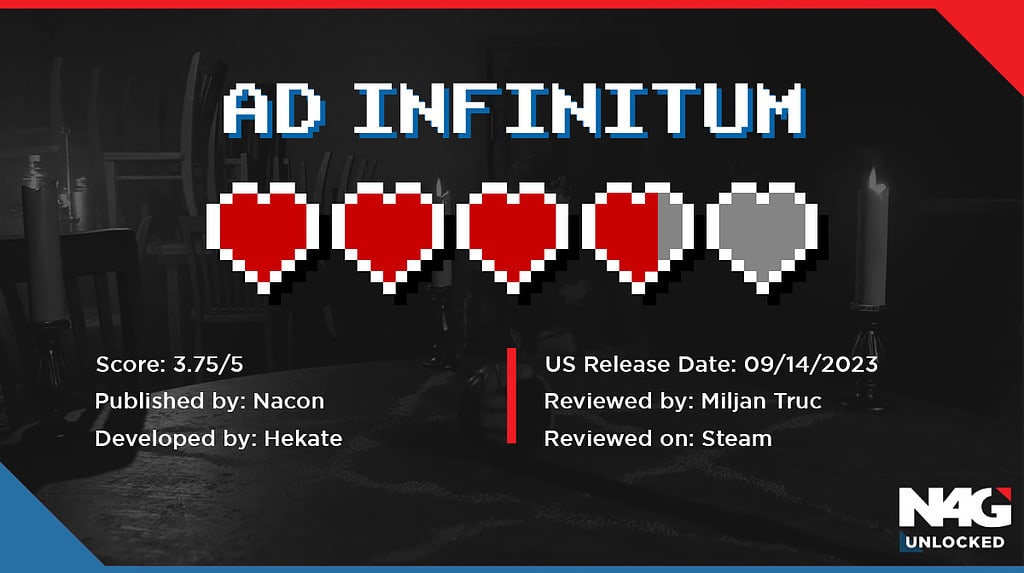
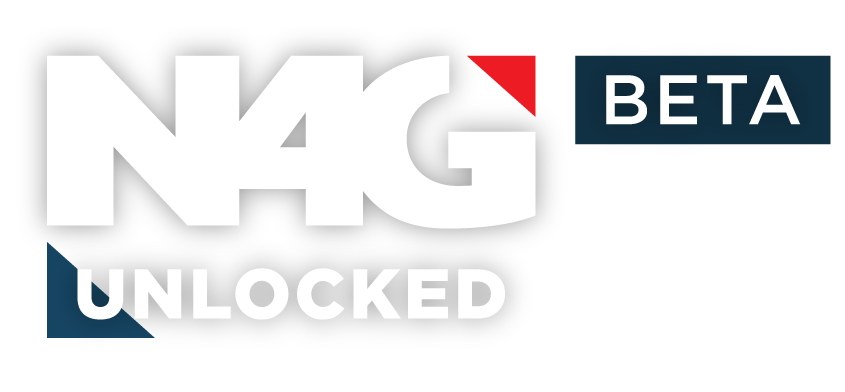


 0 Comments
0 Comments 